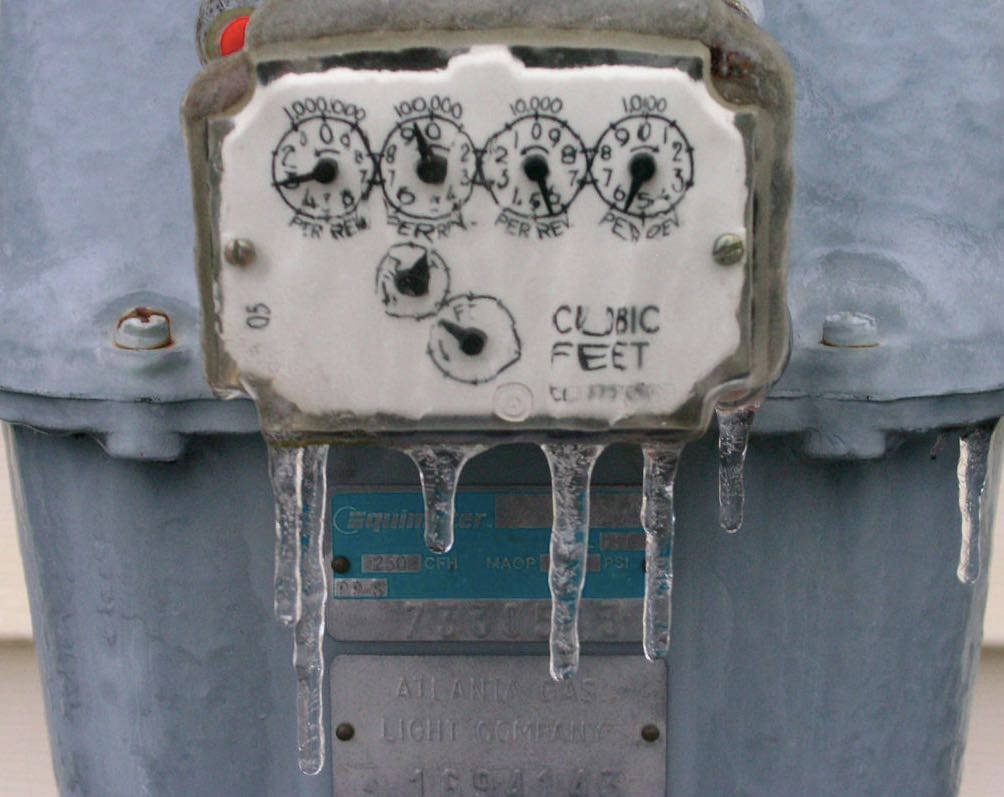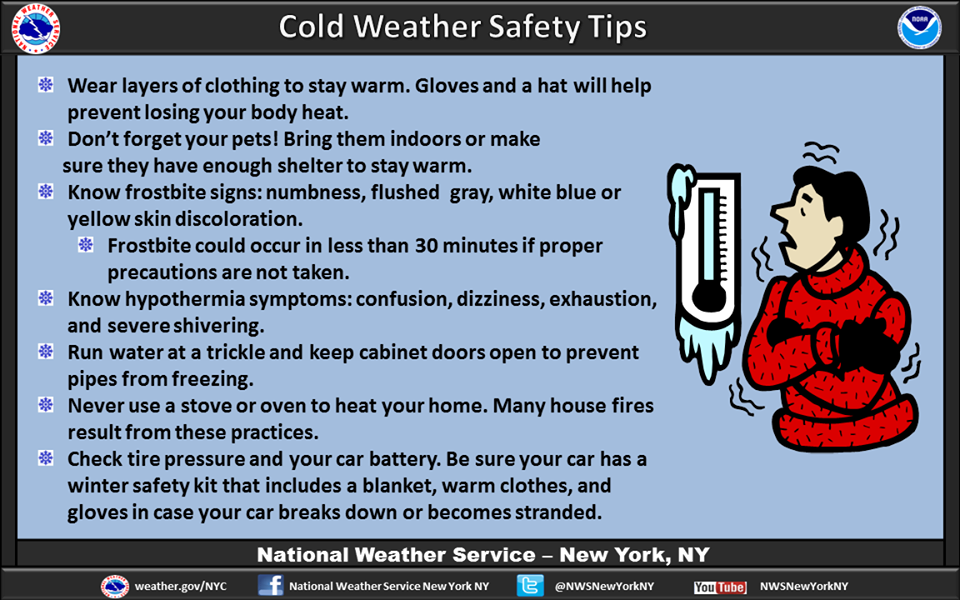Late Week Arctic Blast Expected Tomorrow, So Here Are Tips To Stay Warm And Safe


Have you pulled out your extra warm sweater? Have you found that missing glove? Have you stocked up on hot cocoa?
Good. That’s a start.
Now let’s keep you, your family, and your neighbors safe and comfortable.
The New York City Emergency Management Department has urged New Yorkers to prepare for “upcoming extreme cold weather.”
The city is expecting its first arctic blast of the cold weather season this Thursday and Friday.
The Forecast
High temperatures Thursday, December 15 are expected to be in the 20s and then drop into the 10s on Thursday night. And the wind chill could go as low as zero degrees. Add winds on Thursday that are forecast for 20-30 mph and 40 mph gusts.
On Friday, December 16, daytime terms are forecast to stay below freezing, with highs in the mid-20s, with a single-digit wind chill. Winds are expected to be 10-15mph and 25 mph gusts. After mid-20s temps on Friday night, expect a warmup on Saturday, as we should have highs in the mid-40s.
“New York City is expecting the coldest temperatures and lowest wind chills of the season on Thursday and Friday,” said NYC Emergency Management Commissioner Joseph Esposito. “These temperatures will be dangerous for New Yorkers. During this blast of arctic cold, stay indoors, and if you have to go out, bundle up. Remember to check in on your family, neighbors, the elderly, or others with increased health risks to make sure they are protected from the extreme cold.”
Cold Weather 101
As always, we’re encouraged to check on neighbors, friends, and relatives, especially the elderly and those with disabilities. Stay indoors as much as possible, wear multiple layers of warm, dry clothing, and do not use alcohol to warm up as that will just increase your chances of hypothermia and frostbite.
- If you suspect a person is suffering from frostbite or hypothermia, call 911 to get medical help.
While waiting for assistance, help the person by getting them to a warm place if possible, removing any damp clothing and covering them with warm blankets.Shivering is an important first sign that the body is losing heat. Shivering is a signal to return indoors. - Cold weather puts an extra strain on the heart. If you have heart disease or high blood pressure, follow your doctor’s advice about performing hard work in the cold. Your body is already working hard to stay warm; don’t overdo it.
Checking heaters and boilers beforehand is also advised:
- Report any loss of heat or hot water to property managers immediately, and call 311.
- Electric space heaters are the only kind legal in NYC because they are supposed to turn off automatically when tipped over. Keep them away from water and flammable objects such as paper and loose fabric.
- Never heat your home with a gas stove or oven, charcoal barbecue grill, or kerosene, propane, generator or oil-burning heaters.

If you live in an apartment building, remember: building owners are legally required to provide heat and hot water to their tenants. Hot water must be provided 365 days per year, especially during the “Heat Season”, between October 1 and May 31:
- Between the hours of 6:00am and 10:00pm, if the outside temperature falls below 55 degrees, the inside temperature is required to be at least 68 degrees Fahrenheit.
- Between the hours of 10:00pm and 6:00am, if the outside temperature falls below 40 degrees, the inside temperature is required to be at least 55 degrees Fahrenheit.
If your building owner, manager, or superintendent is not responding, call 3-1-1 or file a complaint at 311ONLINE for heat and hot water conditions.
Check your carbon monoxide detector. Make sure all fuel-burning devices such as furnaces, boilers, hot water heaters, clothes dryers, and fireplaces and chimneys are properly vented to the outdoors and operating properly. If you are not sure, contact a professional to inspect and make necessary repairs.
The symptoms of carbon monoxide poisoning are non-specific and include headache, nausea, vomiting, dizziness, sleepiness, trouble breathing, and loss of consciousness. Severe poisonings may result in permanent injury or death.
If you suspect carbon monoxide poisoning, call 911, get the victim to fresh air immediately, and open windows.
If You Need Emergency Heating Assistance
The Human Resources Administration (HRA) administers the federal Home Energy Assistance Program (HEAP), which can help low-income renters and homeowners with heating bills and other energy expenses. HEAP can help with:
- Regular heating bills from a variety of heat sources (even if heat is included in your rent or you live in subsidized housing).
- Emergency payments to keep you from losing your heat.
- Replacing damaged furnaces, boilers and heating units.
Eligibility for HEAP is based on your household income, family size and energy costs. If you are homebound and need help with your heating bills, you can call the NYC Heat Line at 212-331-3150 to arrange a home visit. For more information, call 311.
Homeless Services
A Code Blue Weather Emergency notice is issued when the temperature drops to 32 degrees or below. No one seeking shelter in New York City will be denied. Anyone who sees a homeless individual or family out in the cold should call 311 immediately and an outreach team will be dispatched to assist them. Code Blue Weather Emergencies includes the following options for the homeless:
- Shelters: During a Code Blue, unsheltered homeless adults can access any shelter location for single individuals. Shelter is available system-wide to accommodate anyone brought in by outreach teams or walk-ins.
- Drop-in centers: All drop-in centers are open 24 hours a day when Code Blue procedures are in effect, taking in as many as people as possible for the duration of inclement weather. Drop-in staff can also make arrangements for homeless individuals at other citywide facilities.
- Safe havens and stabilization beds: Chronically homeless individuals may be transported to these low-threshold housing options, where they may go directly from the street to a bed.




